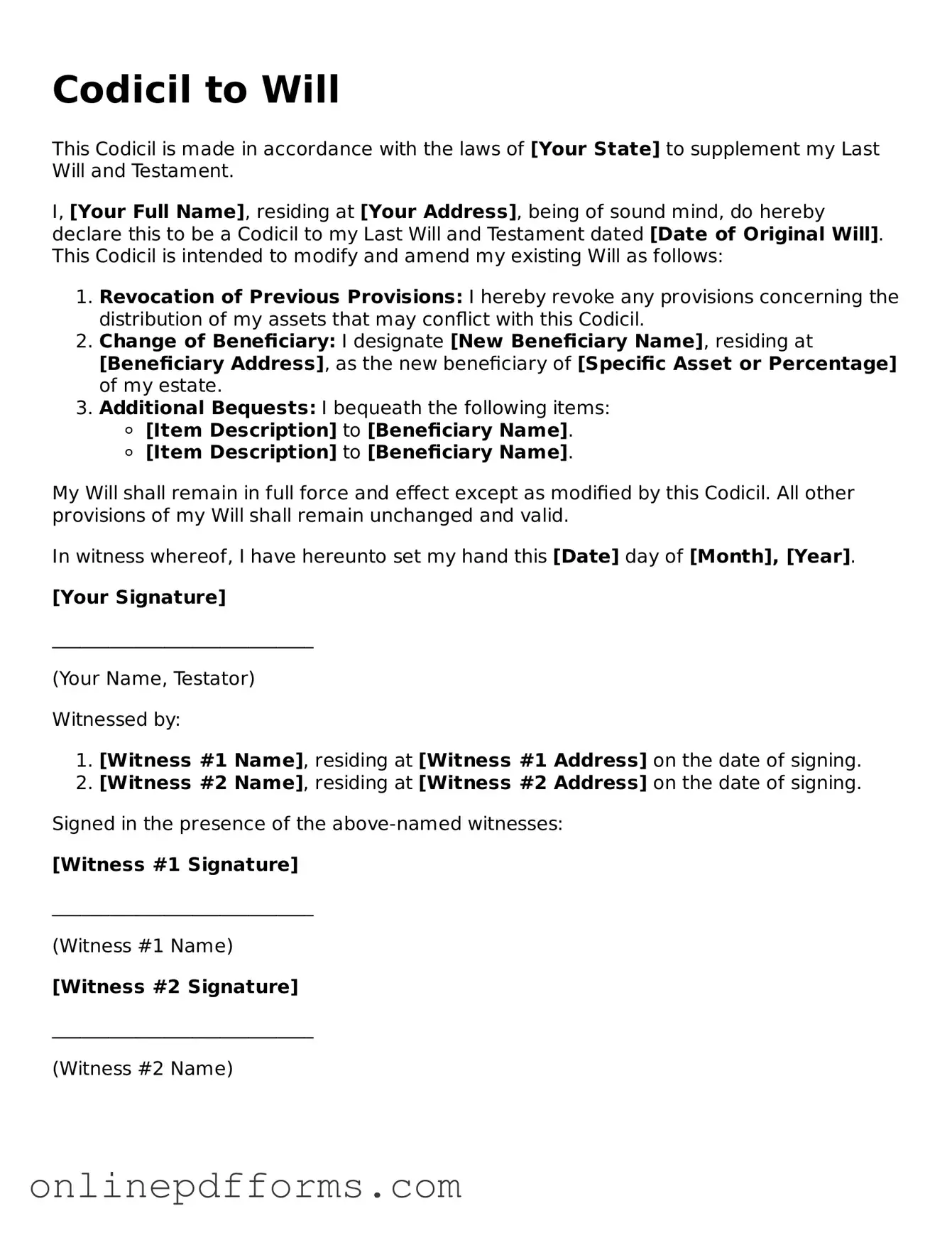A Codicil to a Will is a legal document that allows a person to make changes or additions to their existing will without having to rewrite the entire document. This makes it a flexible option for individuals who want to update their estate plans. Similar to a codicil, a Living Will outlines a person's wishes regarding medical treatment in the event they become incapacitated. Both documents serve as a means to express personal preferences, ensuring that one’s intentions are honored, whether in life or after death.
An Advance Directive is another document akin to a Codicil. It combines a Living Will and a Medical Power of Attorney, providing comprehensive instructions about healthcare decisions. Just like a codicil allows changes to a will, an Advance Directive can be updated to reflect new preferences regarding medical treatment and end-of-life care. Both documents prioritize the individual's wishes and offer peace of mind to family members during challenging times.
A Power of Attorney is also similar in that it grants authority to another person to make decisions on your behalf. While a Codicil modifies a will, a Power of Attorney can address financial or legal matters. Both documents are crucial for ensuring that a person's wishes are followed, whether in managing assets or distributing an estate. They empower individuals to designate trusted individuals to act in their best interests when they cannot do so themselves.
A Revocable Trust is another estate planning tool that shares similarities with a Codicil. While a Codicil modifies a will, a Revocable Trust can be altered or revoked during the creator's lifetime. Both documents allow for flexibility and can be used to manage assets and provide for beneficiaries. They also help avoid probate, ensuring that the distribution of assets occurs smoothly and according to the individual's wishes.
A Last Will and Testament is the foundational document that a Codicil modifies. The will outlines how assets should be distributed after death, while the codicil serves to make specific adjustments without starting from scratch. Both documents work together to ensure that a person’s final wishes are clearly articulated and legally binding.
An Estate Plan is a broader concept that encompasses various documents, including a Codicil. It outlines how a person's assets will be managed and distributed, covering both wills and trusts. While a Codicil specifically addresses changes to a will, an Estate Plan provides a comprehensive view of an individual's overall intentions regarding their estate. Both are essential for effective estate management and ensuring that one’s wishes are respected.
Understanding the different legal documents available is essential in managing your estate effectively. One important form to consider is the Last Will and Testament, which is crucial for outlining your wishes after your passing. For those looking to create such a document, resources are available online, including mypdfform.com/blank-last-will-and-testament/, which offers templates to help ensure your intentions are properly documented.
A Declaration of Trust is similar in that it sets forth the terms under which assets are held and managed. While a Codicil modifies a will, a Declaration of Trust can specify how assets are to be used during a person's lifetime and after their death. Both documents aim to clarify the intentions of the individual and provide guidance for the management and distribution of assets.
A Beneficiary Designation is another important document that operates in conjunction with a Codicil. This document allows individuals to specify who will receive certain assets, such as life insurance policies or retirement accounts. While a Codicil modifies the distribution of assets in a will, beneficiary designations can override the will in many cases. Both documents are essential for ensuring that assets are distributed according to an individual’s wishes.
